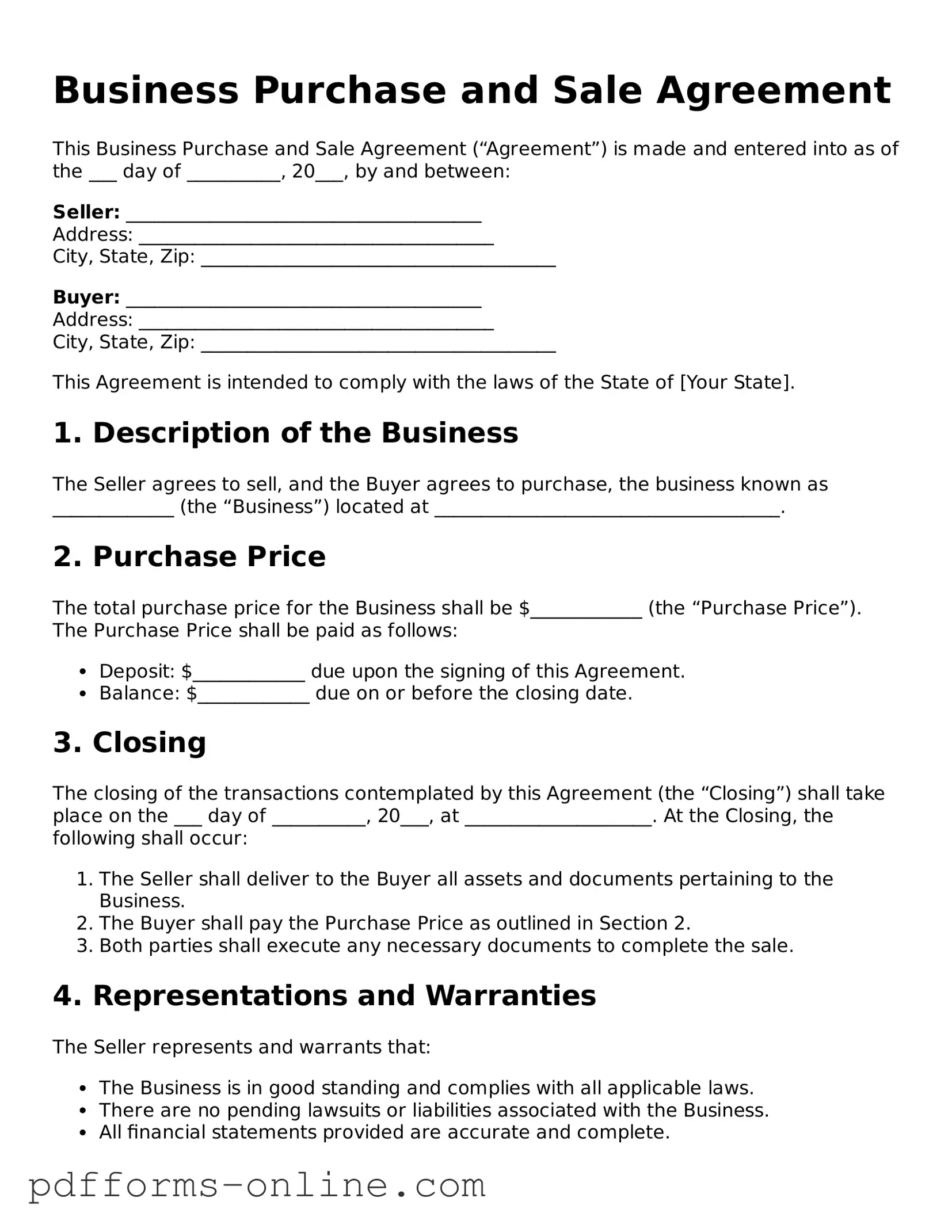Business Purchase and Sale Agreement
This Business Purchase and Sale Agreement (“Agreement”) is made and entered into as of the ___ day of __________, 20___, by and between:
Seller: ______________________________________
Address: ______________________________________
City, State, Zip: ______________________________________
Buyer: ______________________________________
Address: ______________________________________
City, State, Zip: ______________________________________
This Agreement is intended to comply with the laws of the State of [Your State].
1. Description of the Business
The Seller agrees to sell, and the Buyer agrees to purchase, the business known as _____________ (the “Business”) located at _____________________________________.
2. Purchase Price
The total purchase price for the Business shall be $____________ (the “Purchase Price”). The Purchase Price shall be paid as follows:
- Deposit: $____________ due upon the signing of this Agreement.
- Balance: $____________ due on or before the closing date.
3. Closing
The closing of the transactions contemplated by this Agreement (the “Closing”) shall take place on the ___ day of __________, 20___, at ____________________. At the Closing, the following shall occur:
- The Seller shall deliver to the Buyer all assets and documents pertaining to the Business.
- The Buyer shall pay the Purchase Price as outlined in Section 2.
- Both parties shall execute any necessary documents to complete the sale.
4. Representations and Warranties
The Seller represents and warrants that:
- The Business is in good standing and complies with all applicable laws.
- There are no pending lawsuits or liabilities associated with the Business.
- All financial statements provided are accurate and complete.
5. Conditions Precedent
The obligations of the Buyer to complete the purchase are subject to the following conditions:
- Completion of due diligence to Buyer's satisfaction.
- Approval of financing determined necessary by the Buyer.
- Delivery of clear title to the assets being purchased.
6. Governing Law
This Agreement shall be governed by, and construed in accordance with, the laws of the State of [Your State].
7. Miscellaneous
This Agreement constitutes the entire agreement between the parties. It may only be amended in writing signed by both parties. Any notices must be sent to the addresses stated above.
IN WITNESS WHEREOF, the parties have executed this Business Purchase and Sale Agreement as of the date first above written.
_____________________________
Seller Signature
_____________________________
Buyer Signature
